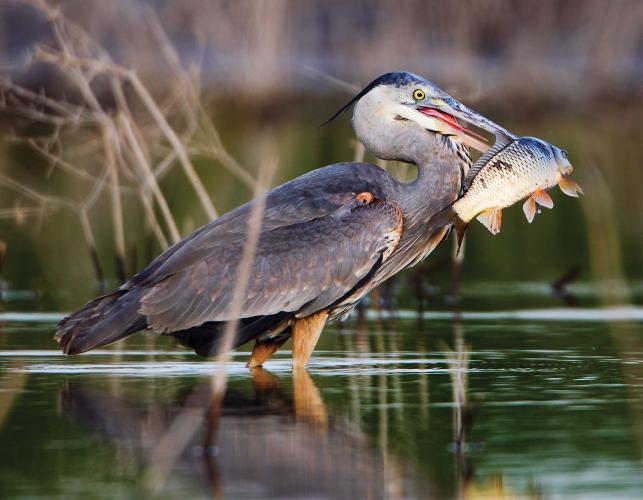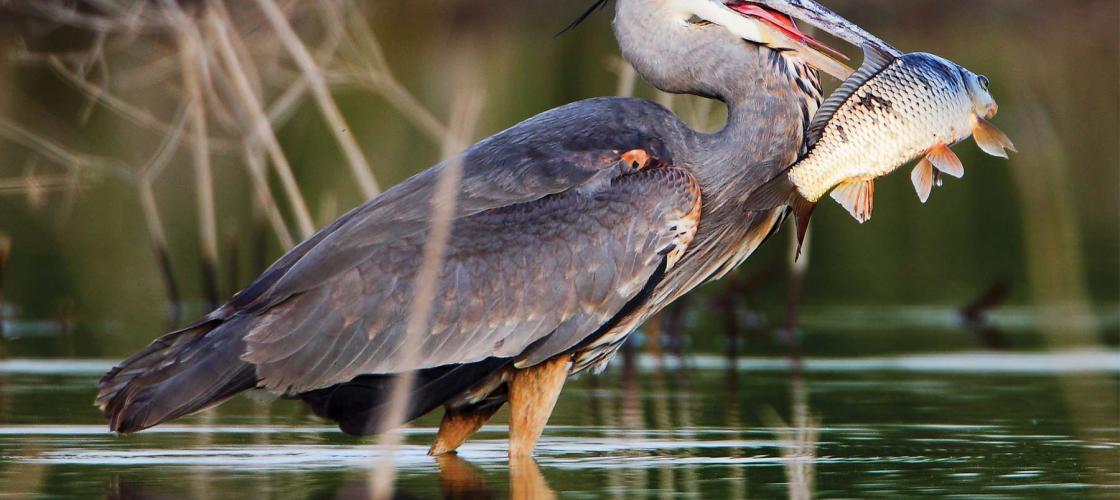If you’re vacationing at the lake and you spot a peculiar-looking blue bird on the shore, there’s no need to do a double take. You’re looking at a great blue heron.
Great blue herons are one of the largest birds in the United States. They are so common that anyone with an eye for wildlife is likely to spot one.
Herons are waders; they gravitate toward ponds, rivers, lakes and streams. These slate-gray birds have a wingspan the size of an eagle’s. They are three feet tall and mostly legs and neck.
When they fly, herons hold their necks in an S-Curve and their legs trail behind. Their wingbeats are deep and slow. It doesn’t matter if they are in flight or simply standing still, their presence is commanding.
Great blue herons can stand still for long periods and then react with lightning speed and deadly aim. With the patience shared by great fishermen, herons wait in shallow water for fish to swim by. They also feed on frogs, snakes, insects and salamanders.
A Commanding Presence
- As top predators, great blue herons check populations of many aquatic and animals. Their eggs and chicks are frequently preyed upon by other predators, though not many animals hunt the adults.
- Their voice is a low, harsh “gwock,” often heard in flight.
- Herons gather in large nesting colonies near water and food. A colony can contain hundreds of bulky stick nests.
- They forage in shallow pools, edges of lakes and similar areas for aquatic prey including frogs, small fish and many other animals that can be swallowed.
- These birds are enjoyed by bird watchers and others who witness their careful foraging and broad wing strokes as they take flight near water.
Learn more about the great blue heron in the MDC’s Field Guide.


Recent Posts
























